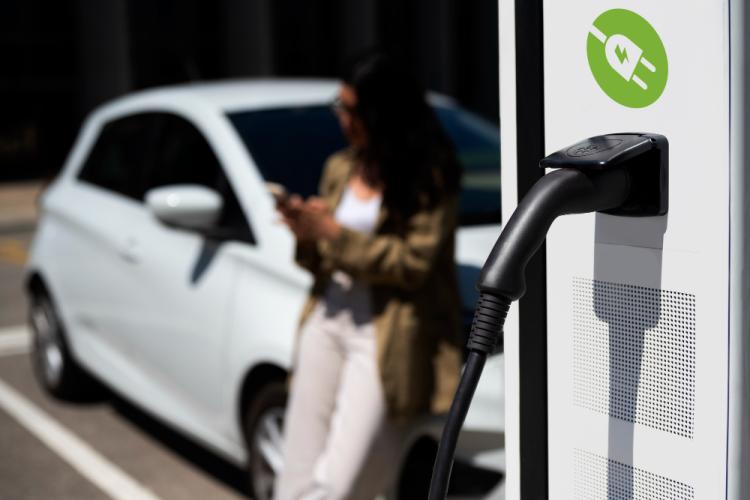Electric vehicle charging stations are specialized infrastructure designed to provide electrical energy to recharge the batteries of electric vehicles. These stations, also known as Electric Vehicle Supply Equipment (EVSE), are an essential component of the electric vehicle ecosystem, as they allow EV owners to charge their vehicles at home, at work, and on the go.
The importance of electric vehicle charging stations cannot be overstated, as they are key to the growth and adoption of electric vehicles. Without charging infrastructure, electric vehicles would be limited in their range and practicality, and their potential environmental and economic benefits would not be realized.
The history of electric vehicle charging stations dates back to the early 1900s, when electric vehicles were first introduced to the market. At that time, electric vehicles were primarily used in cities and were charged using a low-voltage, slow-charging system. However, with the development of gasoline-powered vehicles and the decline of electric vehicles, charging infrastructure fell out of use.
It was not until the early 2000s, when electric vehicles started to gain popularity again, that charging infrastructure began to be developed. Today, there are thousands of EV charging stations around the world, and governments, businesses, and individuals are investing in the development of charging infrastructure to support the growth of electric vehicles.
Types of Electric Vehicle Charging Stations:
Level 1, Level 2, and Level 3 are the three types of electric vehicle (EV) charging stations, also known as Electric Vehicle Supply Equipment (EVSE).
- Level 1 Charging Stations
Level 1 charging stations are the most basic and slowest type of EV charging station. They use a standard 120-volt outlet, similar to those used in homes, and typically provide a charging rate of 2-5 miles of range per hour. As such, Level 1 charging stations are best suited for overnight charging at home or in a parking garage, as they can take up to 8-20 hours to fully charge an EV battery, depending on the size of the battery.
- Level 2 Charging Stations
Level 2 charging stations are the most common type of charging station and can be found in public places, workplaces, and homes. They use a 240-volt outlet and provide a charging rate of 10-60 miles of range per hour, depending on the vehicle and charging station. Level 2 charging stations can fully charge an EV battery in 4-8 hours, making them a convenient option for daily charging. Additionally, Level 2 charging stations can be installed with a variety of connector types, including J1772, Tesla, and CCS.
- Level 3 Charging Stations
Electric Vehicle Charging Stations
Level 3 charging stations, also known as DC fast charging stations, are the fastest type of charging station and are typically found along highways and in commercial areas. They use a 480-volt direct current (DC) power supply and provide a charging rate of up to 90 miles of range in just 30 minutes. However, not all EVs can use Level 3 charging stations, as they require a specific charging port and battery configuration. Additionally, Level 3 charging stations can be expensive to install, making them less common than Level 1 and Level 2 charging stations.
How Electric Vehicle Charging Stations Work
Electric vehicle charging stations use a standardized charging protocol to communicate with the vehicle and ensure safe and efficient charging. The two most common protocols are the CHAdeMO and CCS (Combined Charging System) protocols. CHAdeMO is used mainly by Japanese and Korean automakers, while CCS is used by European and American automakers.
A typical electric vehicle charging station:
consists of three components: the charging station itself, a cable to connect the charging station to the vehicle, and a connector that fits into the vehicle’s charging port. Safety features of electric vehicle charging stations include ground fault protection, which shuts off power if there is a ground fault, and thermal management systems that regulate temperature during charging.
Locations of Electric Vehicle Charging Stations:
Electric vehicle charging stations can be found in a variety of locations, including residential areas, public places, and workplaces. Residential charging stations are typically level 1 or level 2 and are installed at a homeowner’s property. Public charging stations can be level 2 or level 3 and are typically found in parking lots, shopping centers, and other public places. Workplace charging stations are also typically level 2 and are installed at businesses to provide charging for employees.
Charging Networks and Apps:
Several charging networks have emerged to provide a seamless charging experience for electric vehicle drivers. These networks include ChargePoint, EVgo, Electrify America, and Tesla Superchargers. Each network has its own unique features, such as the ability to reserve a charging spot, pay for charging, and track charging history. Charging apps, such as PlugShare and ChargeHub, allow electric vehicle drivers to locate and navigate to charging stations, view charging status, and pay for charging.
Future of Electric Vehicle Charging Stations:
The future of electric vehicle charging stations is promising, with continued growth in both the number of electric vehicles and the number of charging stations. Advances in charging technology, such as wireless charging and bi-directional charging, are expected to improve the charging experience for electric vehicle drivers. Furthermore, the integration of electric vehicle charging stations with renewable energy sources, such as solar and wind power, is expected to have a positive impact on the energy sector and the environment.
Conclusion:
Electric vehicle charging stations are an essential part of the electric vehicle infrastructure. As electric vehicles become more common, it is important to have a clear understanding of the different types of charging stations, how they work, and their locations. Additionally, charging networks and apps are making it easier than ever to charge electric vehicles. With continued advancements in technology, the future of electric vehicle charging.



